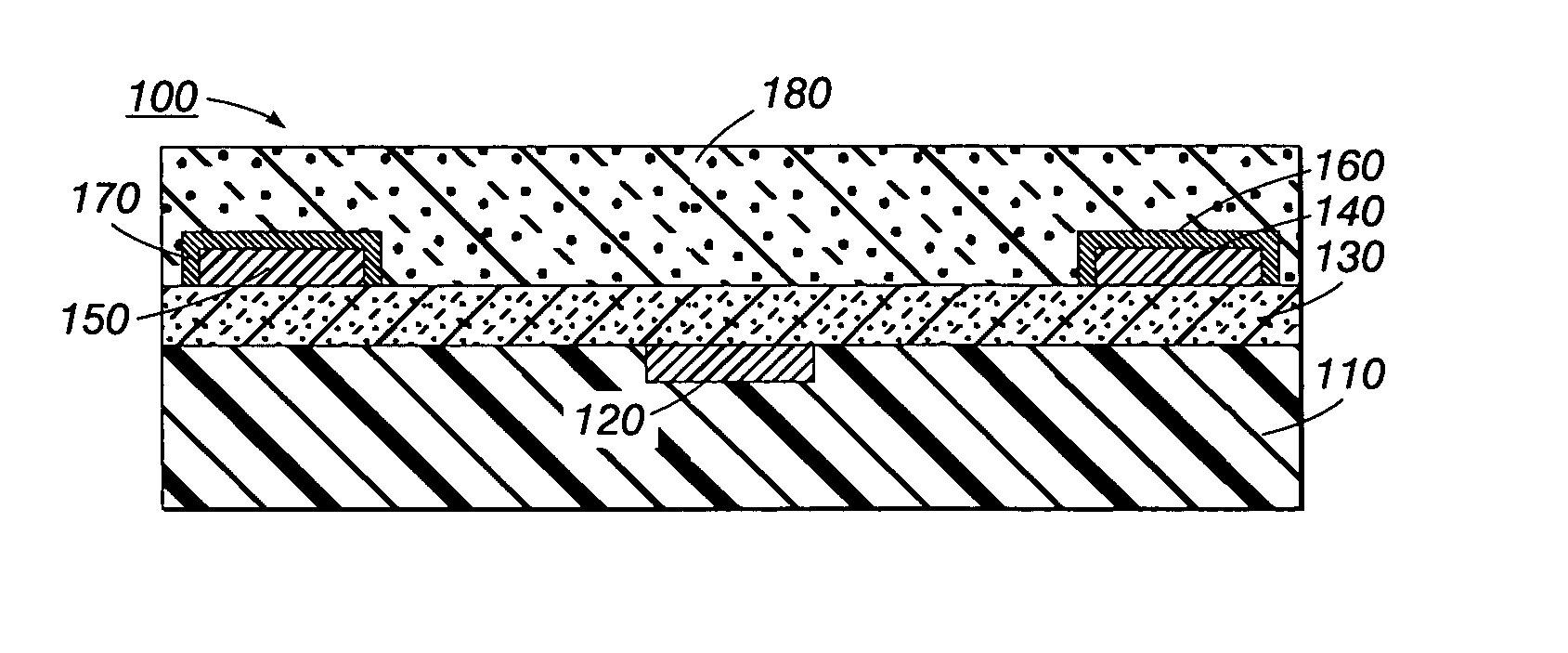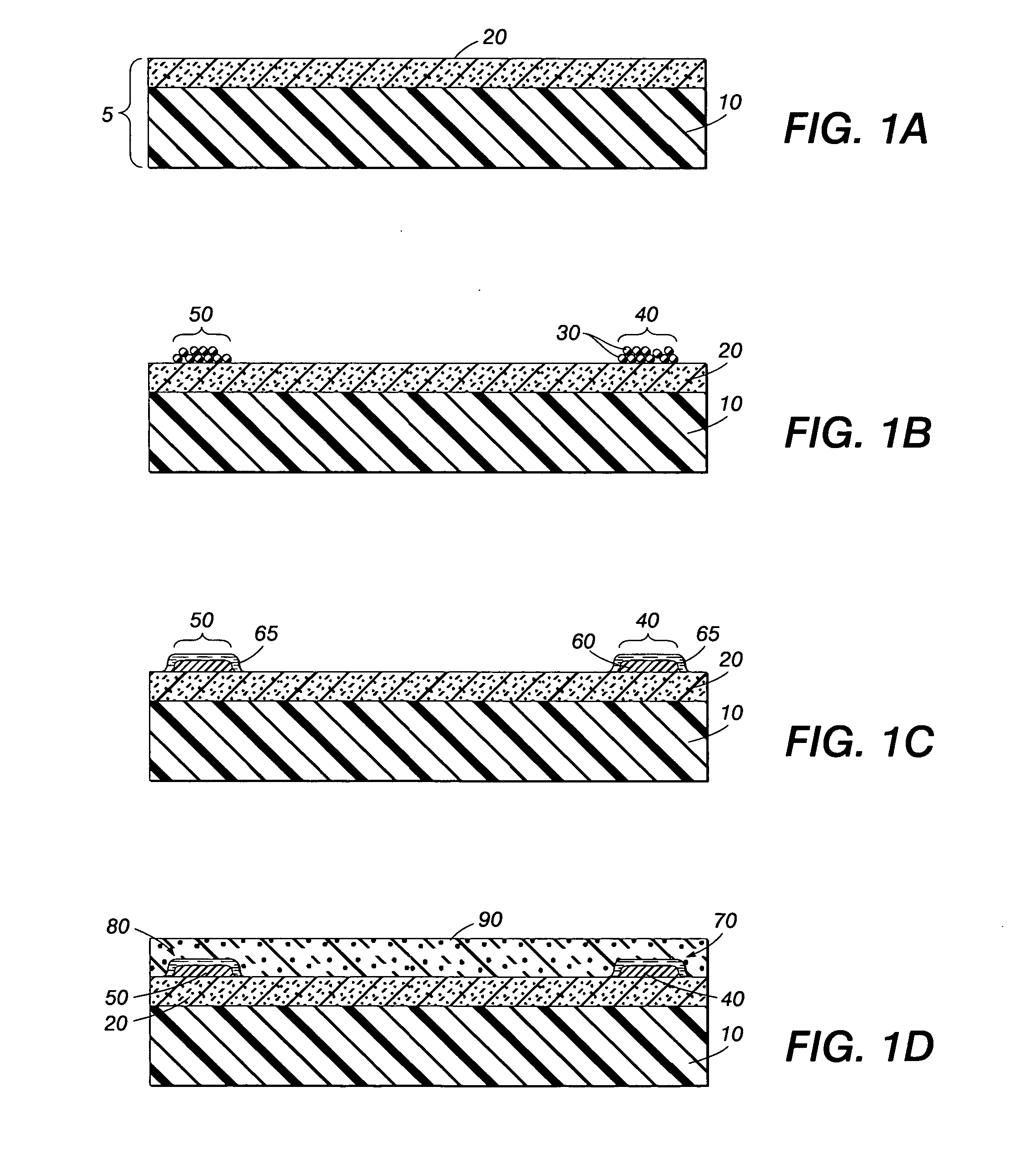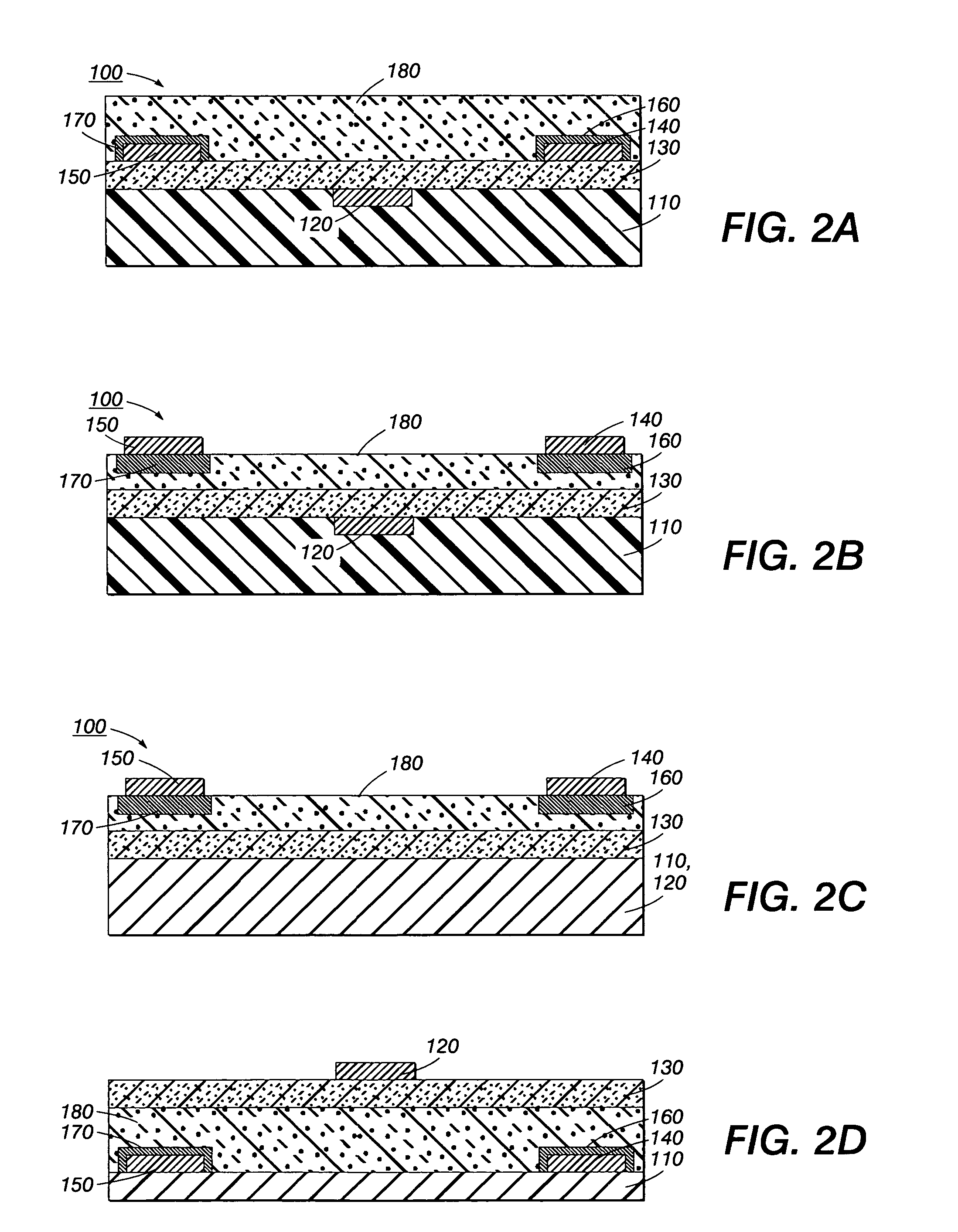Methods to minimize contact resistance
a technology of contact resistance and minimizing cost, which is applied in the direction of solid-state devices, organic semiconductor devices, material nanotechnology, etc., can solve the problems of low efficiency of tft circuits, and high cost of silicon-based tft circuits. achieve the effect of increasing the conductivity of semiconductors and reducing contact resistan
- Summary
- Abstract
- Description
- Claims
- Application Information
AI Technical Summary
Benefits of technology
Problems solved by technology
Method used
Image
Examples
example 1
[0040] An n-doped silicon wafer with a 100-nm silicon oxide layer was used as substrate. The doped wafer functioned as the gate electrode and the silicon oxide layer functioned as the gate dielectric which had a capacitance of about 30 nanofarads per square centimeter (nF / cm2) as measured with a capacitor meter. The silicon oxide surface was first cleaned with argon plasma and then immersed in a 0.1 M solution of octyltrichlorosilane (OTS-8) in toluene at 60° C. for 20 minutes to form a self-assembly monolayer. A solution of oleic acid-stabilized silver nanoparticles (prepared according to Lin, X. Z, et al., Langmuir, 2003, 19, 10081.) in cyclohexane (5-wt %) was spin-coated on the OTS-8-modified silicon wafer. After annealing at 200° C. for 45 min, a highly conductive thin film was formed. The conductivity of the thin film was measured to be 2×104 S / cm. The conductive thin film was mechanically patterned into electrodes with channel length of 19 μm and channel width of 1600 μm. The...
PUM
| Property | Measurement | Unit |
|---|---|---|
| temperature | aaaaa | aaaaa |
| thickness | aaaaa | aaaaa |
| thickness | aaaaa | aaaaa |
Abstract
Description
Claims
Application Information
 Login to View More
Login to View More - R&D
- Intellectual Property
- Life Sciences
- Materials
- Tech Scout
- Unparalleled Data Quality
- Higher Quality Content
- 60% Fewer Hallucinations
Browse by: Latest US Patents, China's latest patents, Technical Efficacy Thesaurus, Application Domain, Technology Topic, Popular Technical Reports.
© 2025 PatSnap. All rights reserved.Legal|Privacy policy|Modern Slavery Act Transparency Statement|Sitemap|About US| Contact US: help@patsnap.com



